Action groups weekend field days in the Bay of Plenty
Julian Bateson, New Zealand Tree Grower February 2015.
It was dark and stormy night more than once during the week before the action groups weekend. However, we did not have to worry. The Bay of Plenty turned on the good weather for those who turned up for the field days at Tauriko Sawmill on 8 November. The theme of the field days was taking our wood to market and this mill was an ideal starting point for the weekend
Tauriko Sawmill
Mike Moores and his family have been running this mill for over 20 years. Mike bought the property in 1991 when he admitted it was a bit of a mess. He wondered what to do with the land after clearing it, happened to notice a portable sawmill at a show and decided to give milling a chance. His father was a saw doctor and his grandfather a mill manager, so milling may have been in the genes.
His son is now helping him take it from a hobby to a business and they now have customers all over New Zealand. The mill cuts timber to order, not for stock, as it costs too much to mill for stock and wait for orders.
The market for the wood produced at the mill is includes Placemakers, ITM, builders, individuals, home owners and landscapers, in fact anyone who wants timber which is not radiata. The mill specialises in big beams, pillars and posts and some examples of these were the very big posts which we could see stacked behind us and later on a mill. They are wharf buffers from durable eucalypts for the port of Tauranga.
After this introduction we were taken for a look around the mill site and some of the sawn timber. There was the usual discussion linked to pruning, recovery volumes and knots, green ones and black ones. Black knots are a problem for weatherboards because they fall out but they are not a problem in structural timber. Most of what is milled here has not been well pruned. Denis Hocking explained how he has produced macrocarpa as clearwood without knots. This stimulated more discussion about getting the silviculture right to produce more valuable timber, otherwise the trees are not worth the effort which you put in. But the conclusion is that when growing alternative species you need to decide on the final product you want when managing the trees throughout their lives.
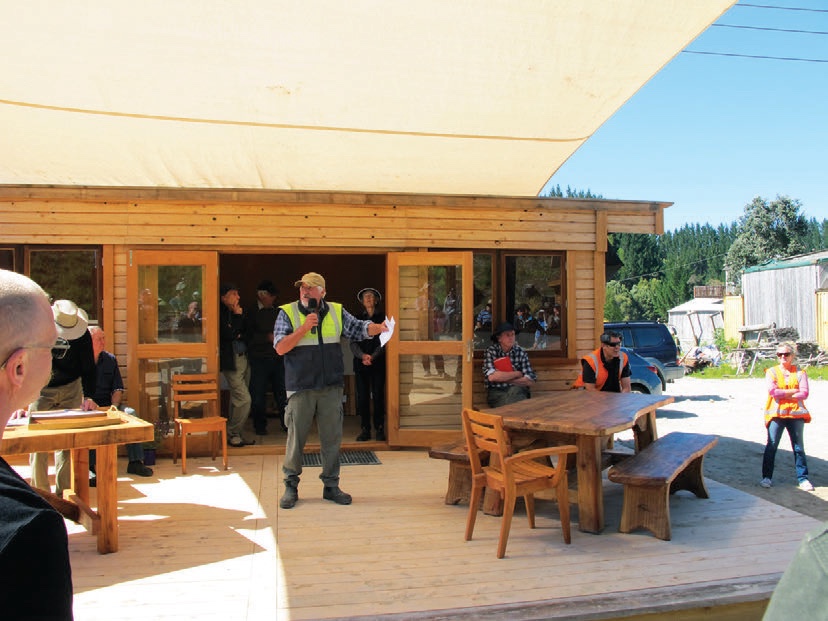
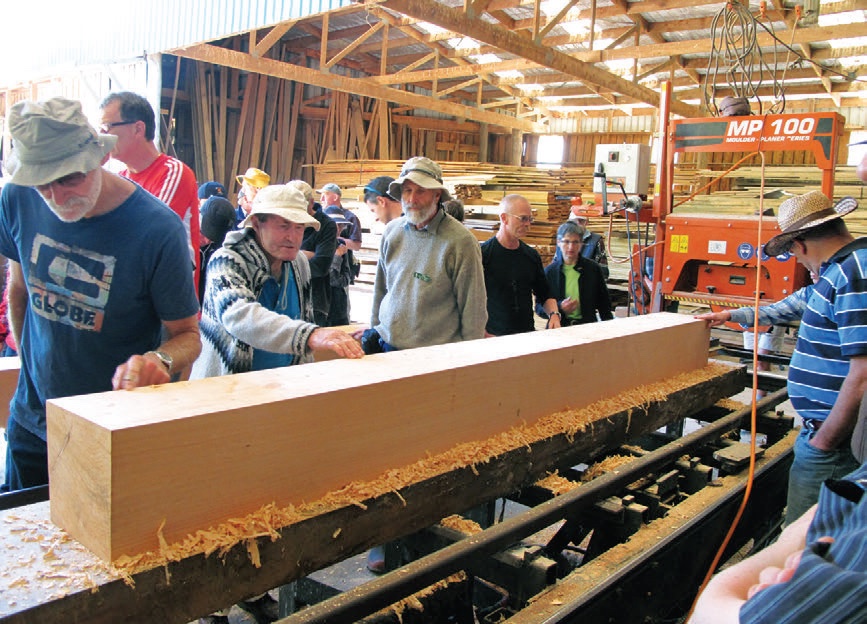
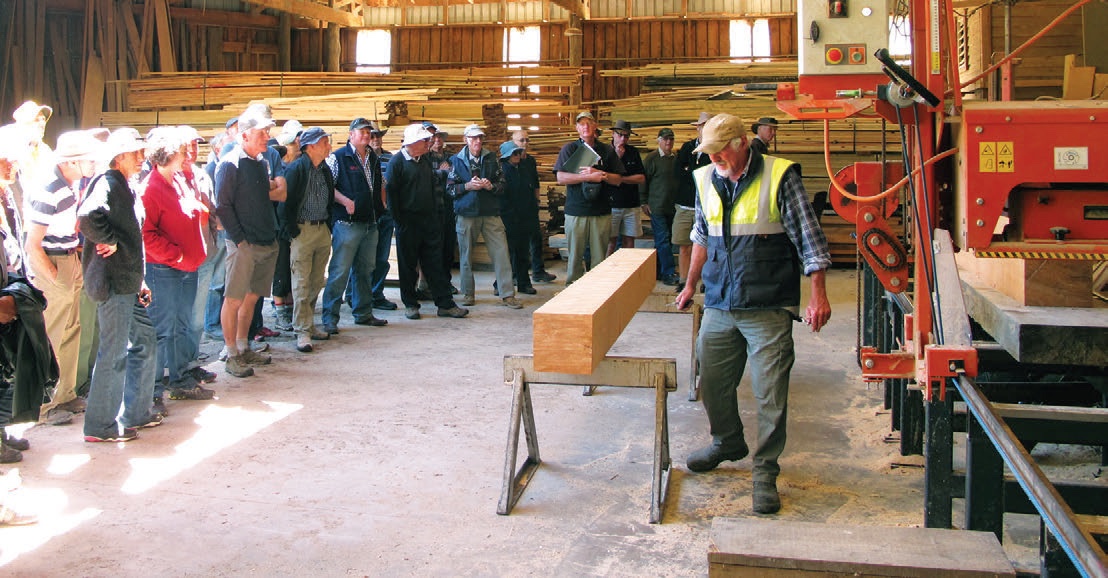
Recovery volume
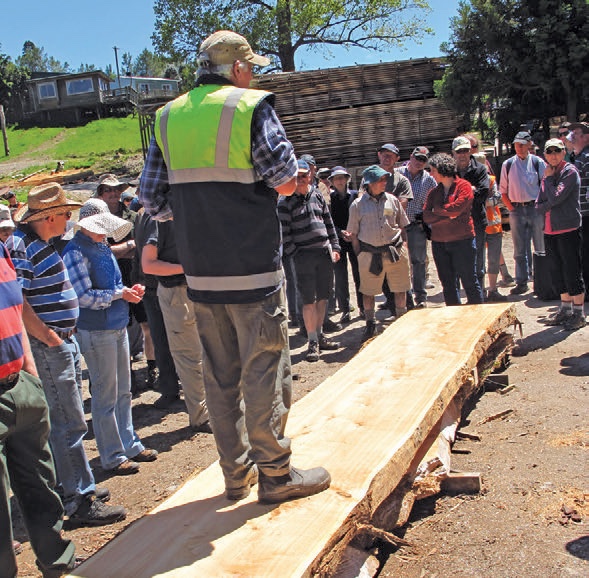
Mike explained that he might only get 10 to 15 per cent recovery from some trees he has bought. By the Mahoe mill demonstration he showed us 150 tonnes macrocarpa which initially looked good when he bought it, but has now discovered that much of it is low quality.
Heidi Dungey from Scion commented that it is going to get harder to find good macrocarpa due to the increasing ravages of canker. New canker resistant seed coming soon may help as well as improvements with site, genetics and silviculture. But this is no help at the moment as these seeds will not be producing timber for a number of decades.
Angus Gordon asked how we might ‘join the dots’. He suggested that the problem could be helped by semi-processing trees on the farm so that they can be sold on the grade they are rather than what the buyer hopes. It would also mean the timber is cheaper to transport. This all seemed to be a good idea but the same point was raised last year at the action group weekend. Vaughan Kearns, who is a mill owner, then said the last thing he wanted was timber cut and stored on a farm because it is often stored badly, sometimes with flood damage.
He said it sounds like a good idea to have the timber cut and stored on a farm but he prefers to have the cut timber stored in his sheds so that he knows exactly what he has, that it is in good condition and ready to be sold. There must be a compromise here somewhere with a role for Farm Forestry Timbers.
We left the mill with a lot of questions but impressed with what could be done with a small range of milling equipment. For a mill which does not stock timber there was an impressive amount of sawn timber as well as logs ready to be milled. One concern is that this site is gradually being absorbed into land being developed for houses and industry. It means the value of the land is increasing rapidly with the associated cost increases. Hopefully the mille will not be priced out of existence.
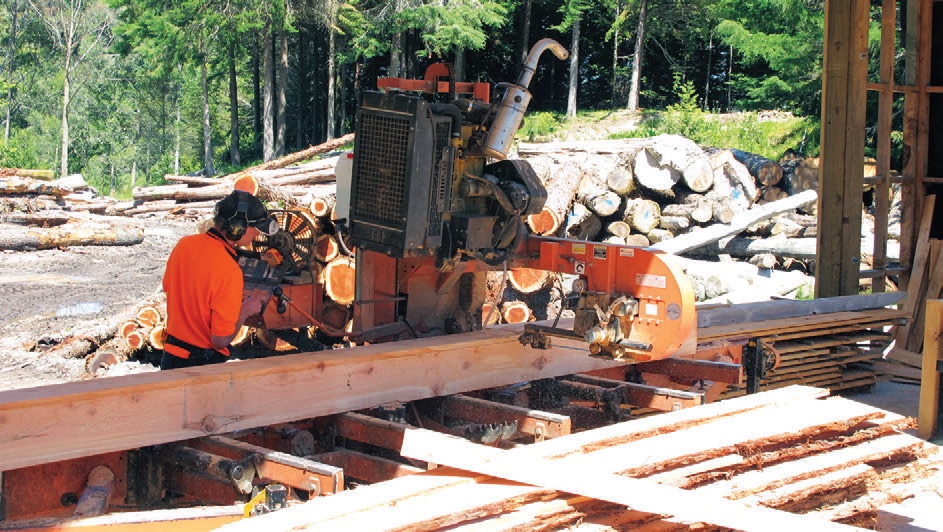
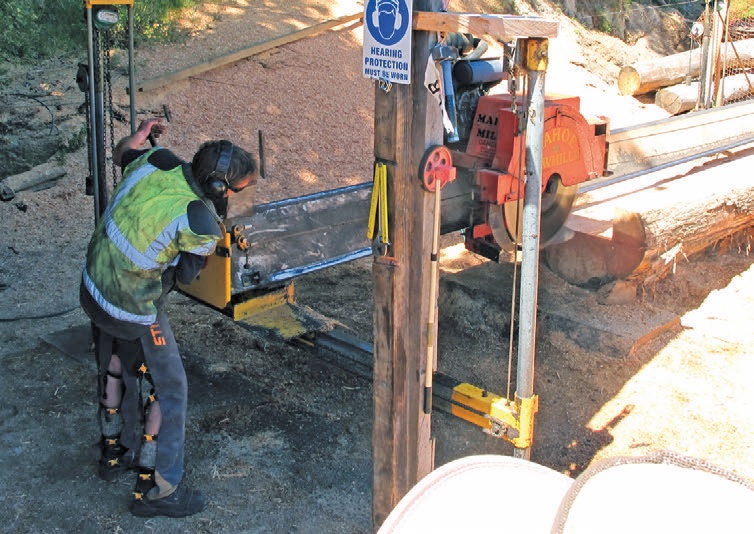
Wholesalers of exotic timber
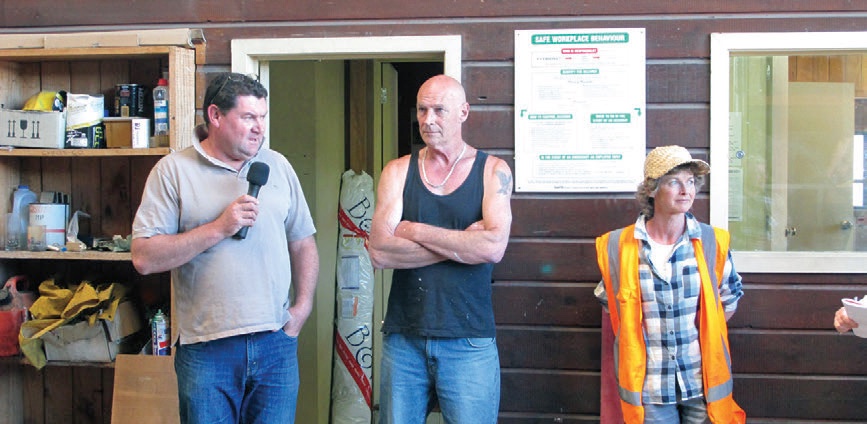
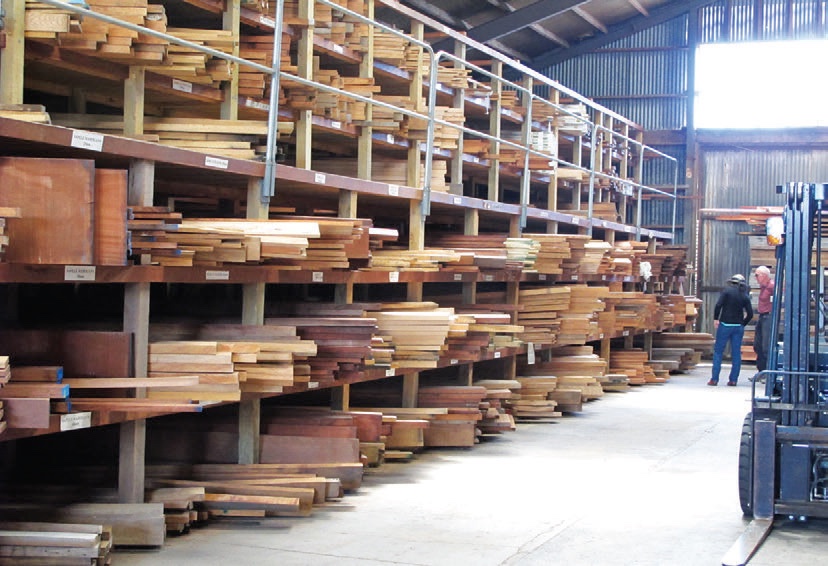
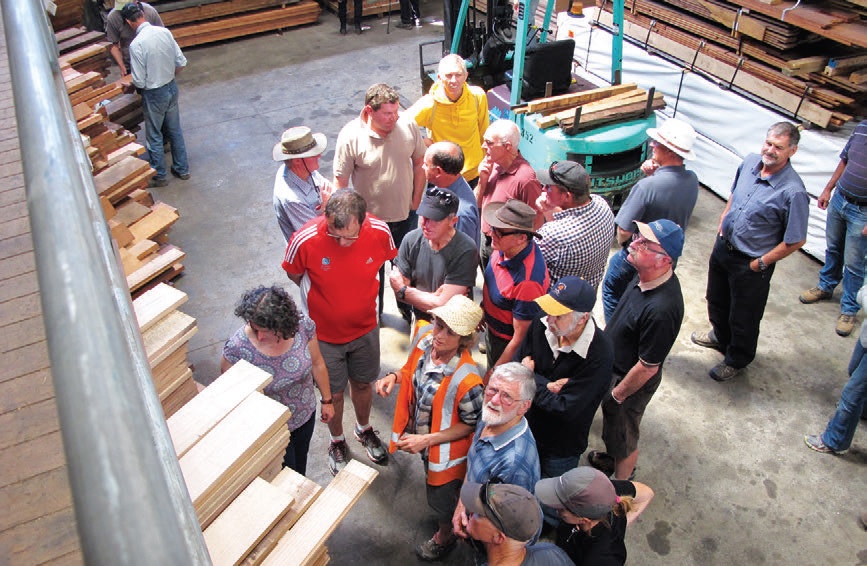
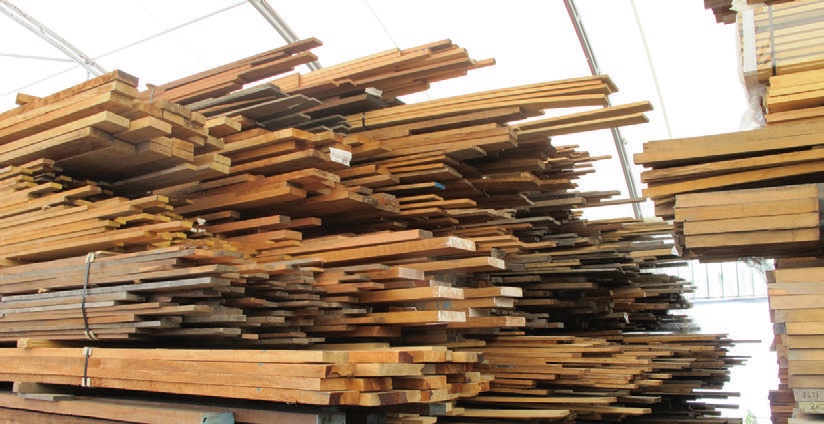
In the afternoon we visited Moxon and Company Limited. This is an Australian owned company which supplies exotic timber for the domestic market. Andrew is the branch manager catering for furniture and joinery. The company has been around for about 20 years but Andrew explained that it is a changing market. They deal mainly in hardwoods and stock about 30 to 40 species although they are trying to reduce the number to keep stock turning over more quickly.
The New Zealand plantation species they buy are mainly Eucalyptus saligna and E. globoidea. Other eucalypts are brought in from Australia, quarter sawn and priced well, in other words cheaper than anywhere else. They are mainly from Victoria and are old growth from state forests. Andrew said that Australian timber is easy to deal with, especially from Victoria as it has the length they prefer.
Moxons only buys sawn timber and so do want to deal directly with farm foresters. Specifications to a miller are that they want clearwood, quartersawn, straight, as long as possible, and ideally between 2.5 and three metres in length. Quartersawn is preferred because it is stable when in use.
Paul Millen commented about what the customer wants. The term blackbutt can cover a variety of eucalypts, as long as you tell the customer what you are doing. It is almost impossible to determine the difference between E. globoidea and E.pilularis although both can be called blackbutt. E. pilularis is very difficult to grow in New Zealand but E. globoidea is the stringybark of choice for The Drylands Initiative.
There was a question about what you do with all the bits of wood that a company such as Moxons do not want, as getting three metre average length is difficult. Heidi Dungey of Scion explained that they are carrying out research looking at whole tree use, such as extractives and pellets, particularly small scale processing. Cypress contain very interesting chemicals which may prove to be more valuable than the wood itself. Eventually most of the good extractives could be taken from the heartwood, with the sapwood used for pellets to burn.
Blackley and Walton farm
On Sunday we were hosted by Gabrielle Walton, her husband Andrew, along with her parents David and Cloie Blackley, on their farm in the Papamoa Hills. There are 244 hectares of forestry on the 400 hectare farm on rolling steep country which is between 150 and 200 metres above sea level.
We were welcomed with coffee and cakes, even though it was just nine in the morning, beside a small bach built a few year earlier with poplar harvested from a shelterbelt. Gabrielle explained how land, which had been drained by her father to grow fruit, had been turned back into wetlands. It is now all protected but when they were converting back to wetlands they were unable to get a grant at the time from the Bay of Plenty regional council because sheep were being used for grazing.
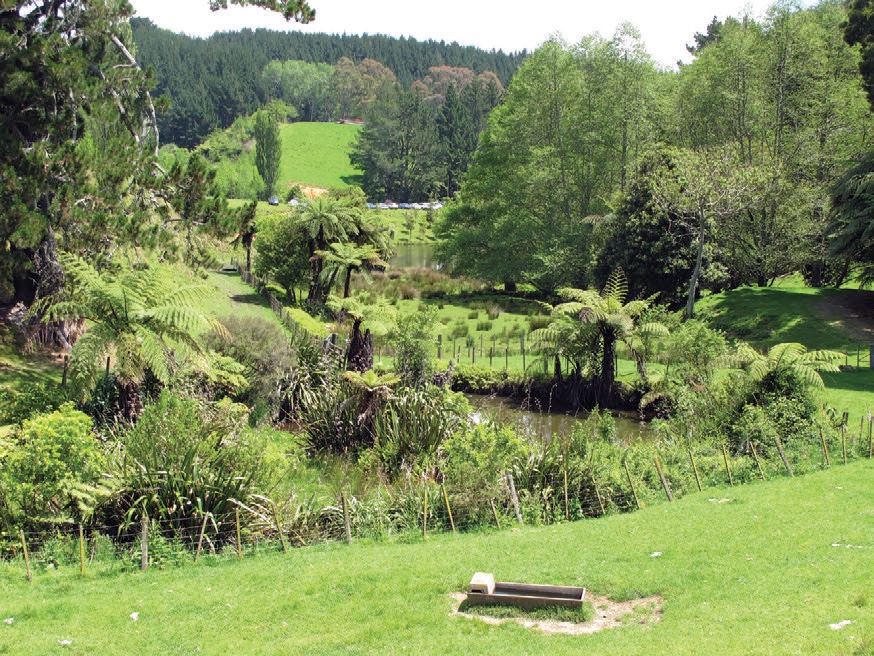
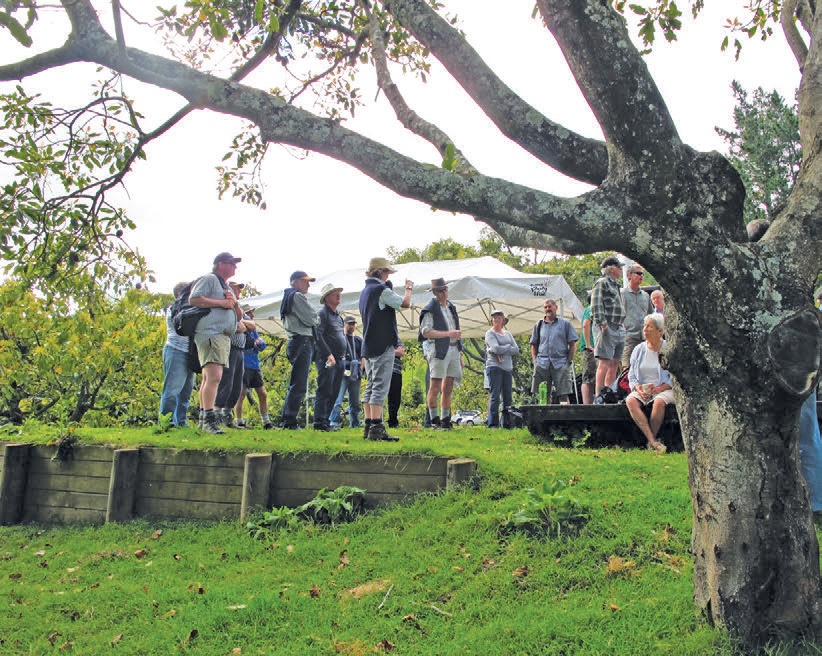
Young kauri
The first stop in the day was at one of the Scion kauri trials. The trees were planted in 2005 at 800 stems per hectare and within four years they were three metres tall. It is estimated that at 60 years they will have produced around 760 cubic metres a hectare. There will be no heartwood in such relatively young kauri, but based on research of other kauri aged 70 years, the timber will be stiffer than Douglas fir.
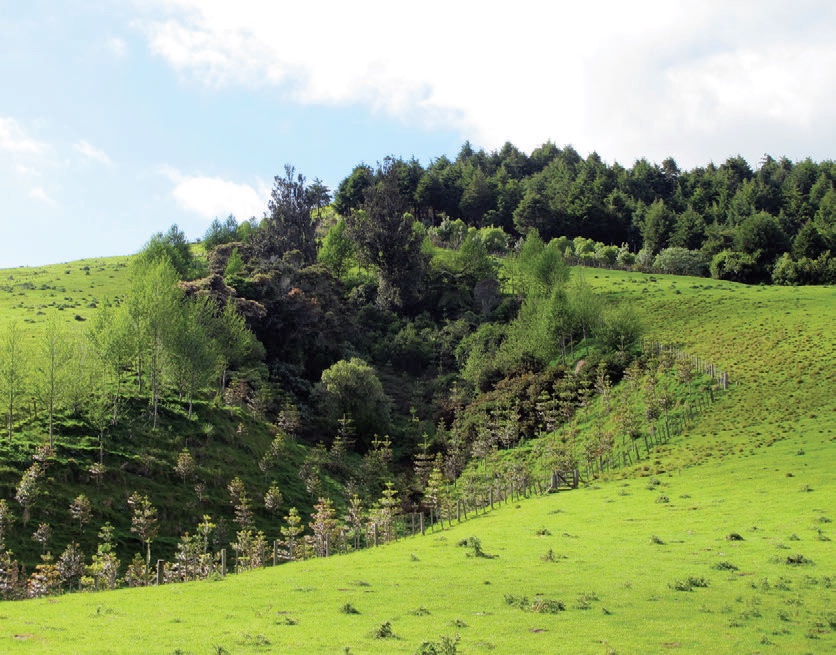
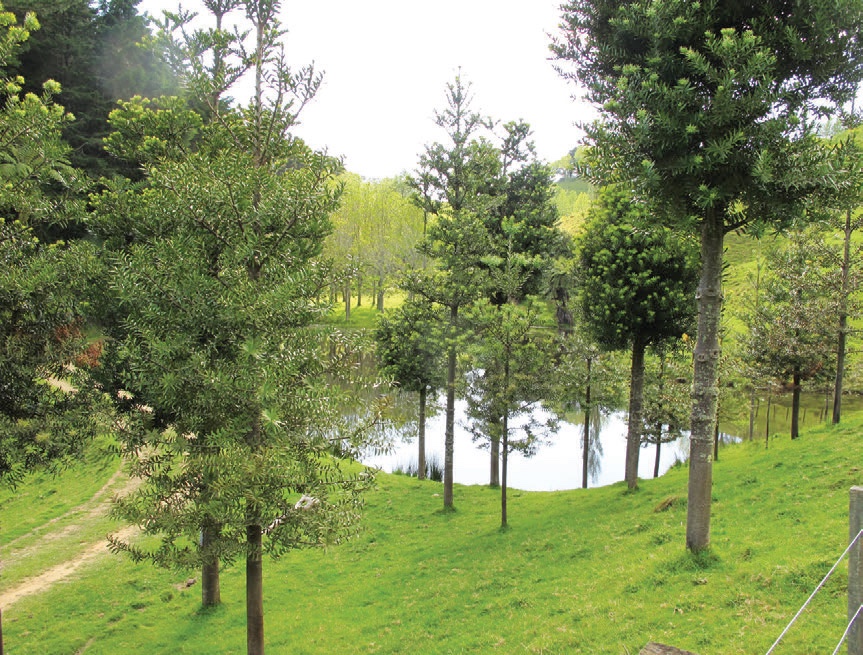
Kauri keep growing all the time on this site and the long leaders without side branches were an example of growing on a fertile site without putting out a whorl of branches. Gabrielle wanted to know how the edge trees should be pruned to avoid heavy branches competing with the leader. There were a number of contradicting suggestions, as expected on field days, with pruning as early as possible being one of the favourites, but there were no conclusions to the best method. Don Tantrum gave a brief demonstration. Some Australian kauri have been planted in another Scion trial but in strong winds they toppled and need staking as they do not like wind.
On the way to the next stop we had swamp cypress pointed out, a deciduous species and apparently the wood has class one durability. However even this fact was one which had doubt thrown on it.
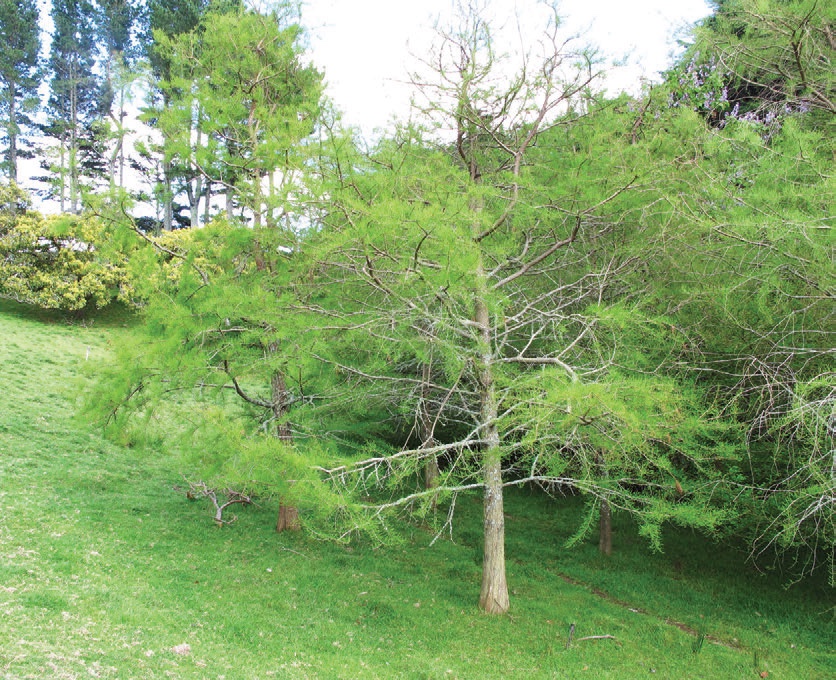
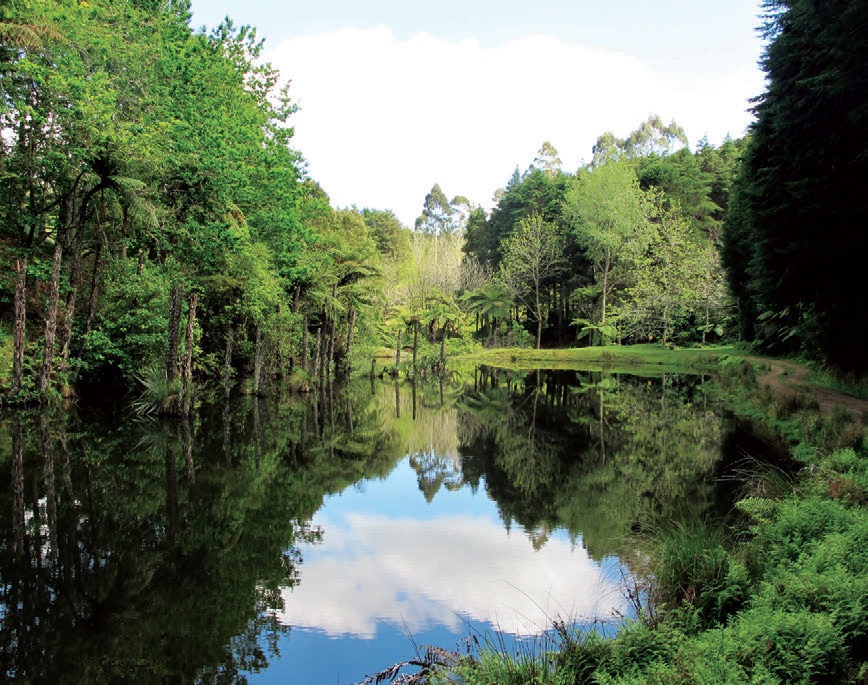
Lusitanica for harvest or leaving
Our next point for discussion involved a plantation of cypress, in this case they were 30-year-old lusitanica. Currently they were at 300 stems per hectare with an estimated volume of 640 cubic metres a hectare. The questions involved whether to leave them to grow bigger to get more money from the greater volume, or harvest them now. At age 20 there were 400 stems a hectare and at that time they were thinned, taking out the worst trees − the smallest and sickest. Gabrielle said the result was very wasteful.
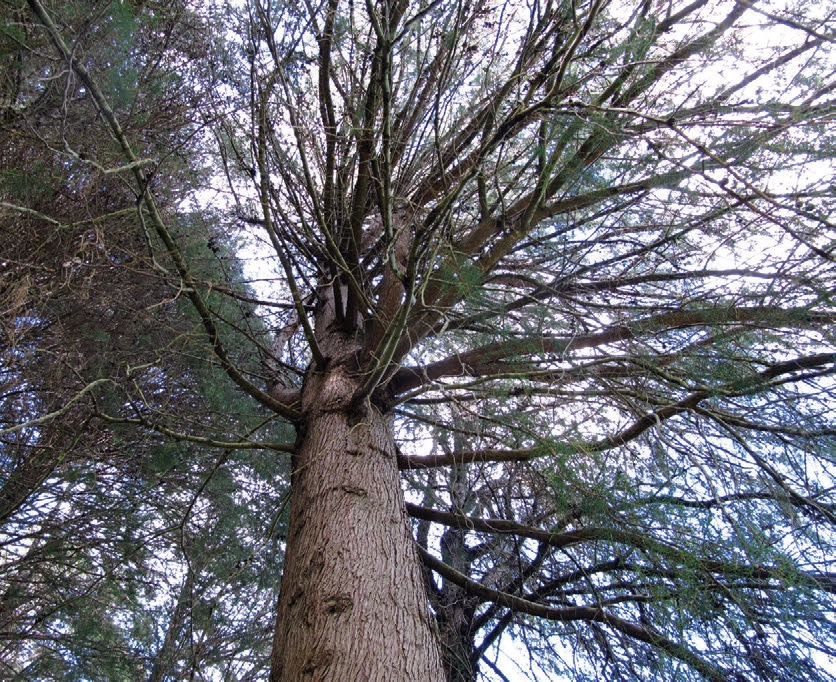
The suggestions now were either to harvest a sample plot or carry out a production thin. The latter would mean the trees remaining would put on around three centimetres a year in diameter and this would increase the heartwood. Denis Hocking said that a few years ago he was getting $350 a tonne, or around $1,000 a tree from similar trees.
There was more discussion about leaving them for 10 years, or longer, and the problem of the bark encased knots which were obviously present in many of the trees, knots which would fall out of sawn timber. The aim should be for as much clearwood as possible and if a production thinning operation was carried out it was questioned how it would be done. Buyers want a sustainable supply so small scale thinning with tractors and winches would be a very good idea needing very few new tracks.
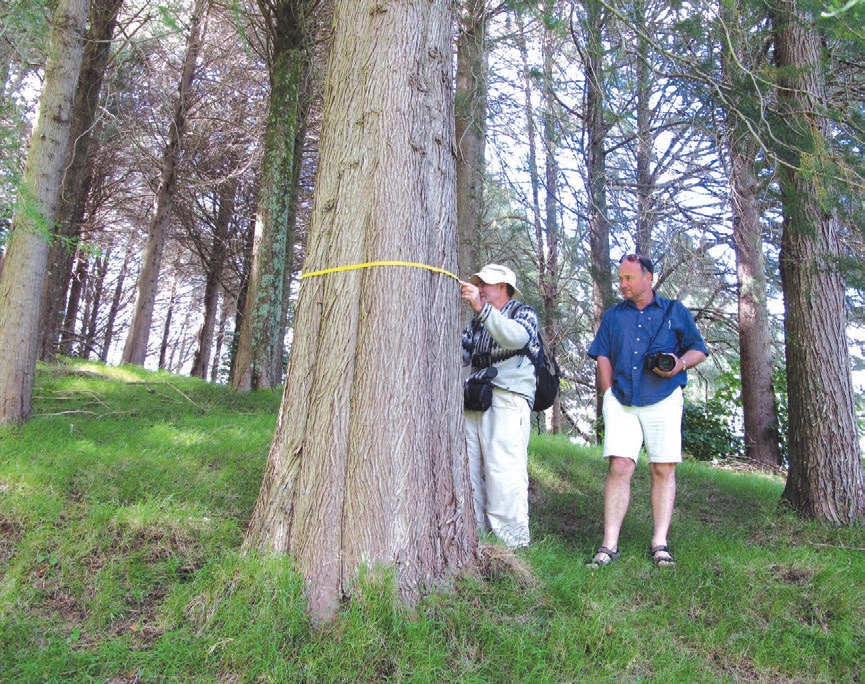
Harvesting radiata pine
This was an action group weekend and radiata pine is not one of the trees we were supposed to be discussing. However, a few poplars and eucalypts were also logged at the same time, which provided an excuse. The poplars had been planted quite widely spaced about 30 years ago in an open in a paddock for soil stabilisation. We were to see the results of milling some of them later on in the day.
Now back to the pine. The harvesting was all carried out without a chainsaw being used because it was all mechanised. Part of the reason for harvesting, apart from the good price pine was getting at the time, was to create the roading which will be needed for future harvesting, and to use some of the harvesting money to pay for this rather than borrowing from the bank. The forest is now ready for harvesting with roads and resource consent all complete.They could get a harvesting crew in with a week’s notice, which is far better than the usual lead-in time of a year or two.
The harvesting was carried out in February and March producing 7,000 tonnes of logs at a gross price of $125 a tonne. Harvesting costs were $27 a tonne and transport $11 a tonne as the port is very close. The nett return was $65 a tonne, or $38,000 a hectare, less the cost of the roading.The trees were mainly 24 and 25 years old but some were as young as 18.
This all made such a contrast to the discussions about cypress, eucalypts, redwoods and blackwoods. With these alternative species there may be no buyer after decades of silviculture. Radiata can be planted, perhaps pruned if required, but as in the case here, within 25 years produce a very good return. Growing radiata may be a lot less enjoyable, the timber far less appealing and needing chemicals added to make it usable outside. But if you are counting the dollars, growing radiata is definitely the easy option. But it does not give the same satisfaction, or frustration.
Portable mill site
The last stop of the afternoon was to see some milling. Quite a lot of 30-year-old poplar, originally grown for soil stabilisation, had already been milled for interior panelling in a new house. The best timber is being used for the panelling and the timber with knots used for 100 mm square posts for sheep yards.
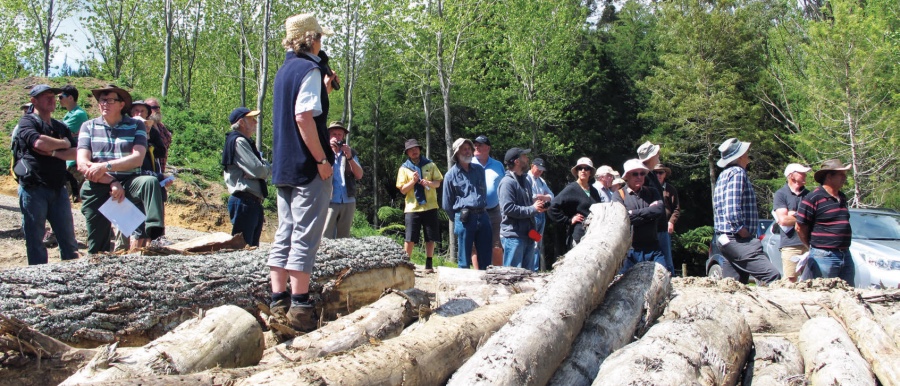
The consensus was that poplar is under-rated. The old farm logs had produced 1,300 metres of panelling as well as a significant number of posts. These posts can be treated with the copper chrome arsenic mix used for radiata pine and make them ground durable. The advantage of the poplar posts, apart from its availability, is that it has more flexibility than pine and the posts are less likely to break when under pressure from farm animals.
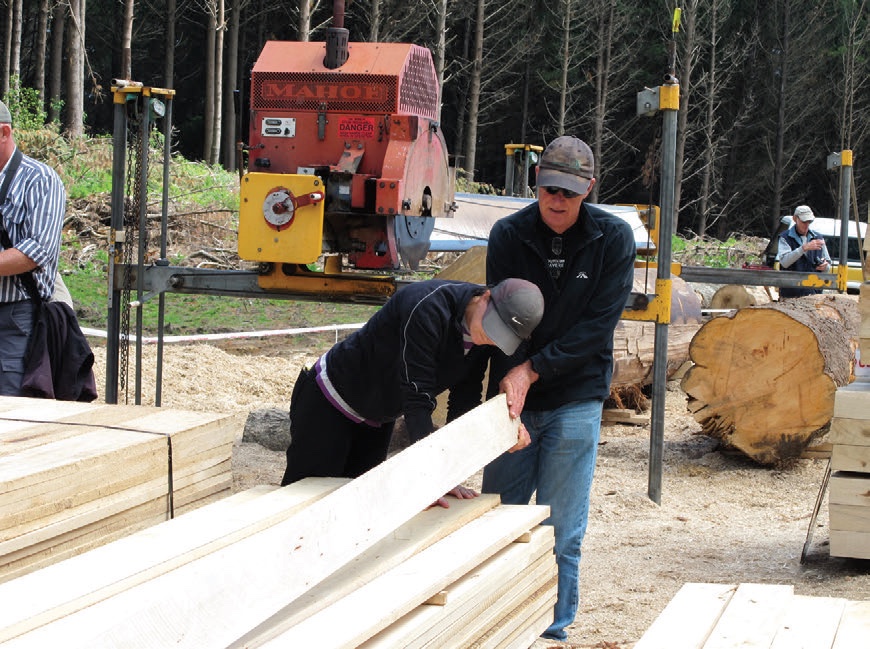
We then watched a eucalypt log being milled and it was impressive to see how easy it was to mill the 150 mm planks for the flooring of a new house. I say it was easy because whenever you mention milling eucalypts to sawmillers there is usually indrawn breath through gritted teeth. Then follows the explanations why it cannot be done, how it will warp and a litany of other reasons why radiata is better.
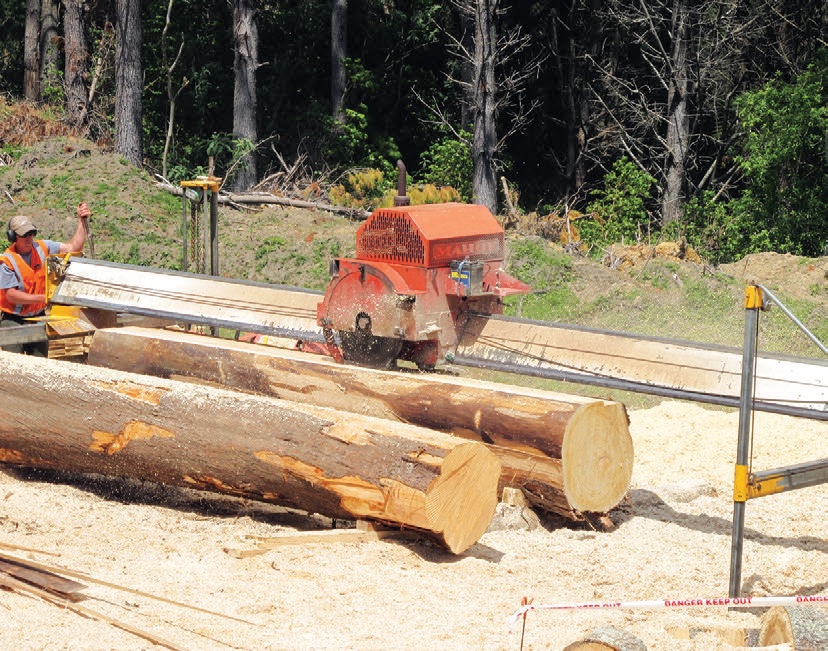
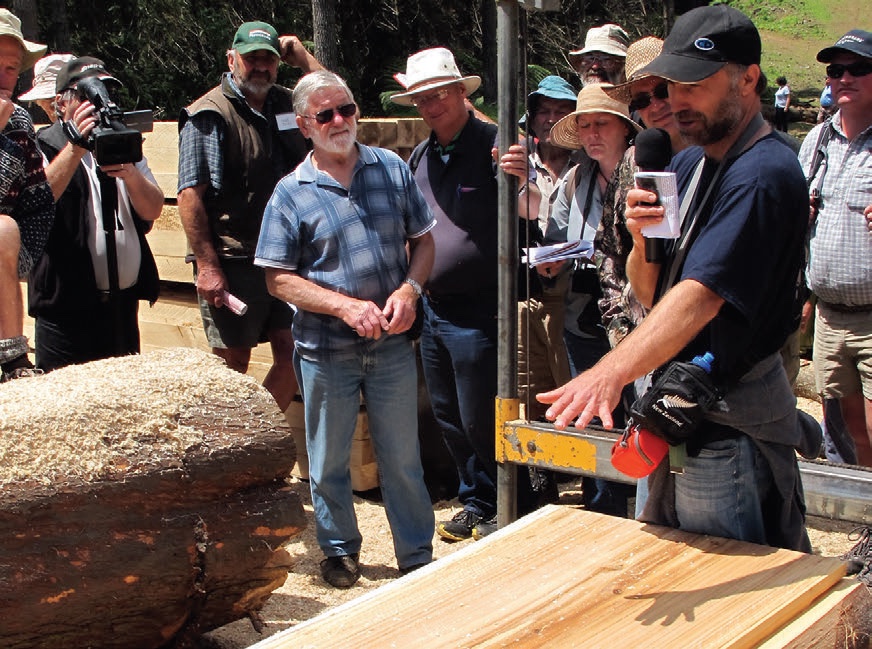
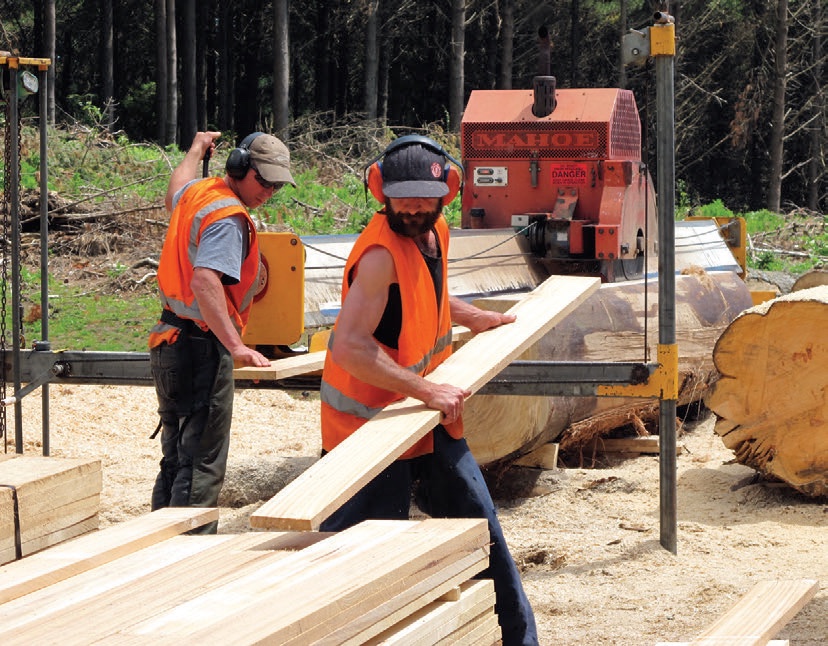
Protecting the timber
There were enough experts around to convince the audience that milling eucalypts is fine as long as you take the appropriate care in the early stages of drying. Flat sawn eucalypt timber needs to be dried very slowly to avoid collapse. First, it needs to be protected from the sun straight away, the day it is milled, and the stack should be kept covered for at least a month.
The base must be absolutely flat with a bearer every 1.2 metres. Fillets need to be narrow to slow the drying rate, ideally 12 to 15 mm in depth and made of the same wood. The fillets should be 600 mm apart, perfectly lined up and should go right out to the end of the boards. It is all worth the effort. A little amount of bow on the boards is not a problem as this will disappear when they are fixed in place.
It is important to make sure that there is sufficient width of the milled timber to allow for the final dressing. On that basis a 155 mm by 28 mm board is needed for a final 150 mm by 25 mm.
Building code problems
There were questions about using eucalypts for framing but the building code will not allow its use. Eucalypt timber does not need treating, but in most cases is not usable in the building code even though it is twice as strong as radiata. Apparently Code 3604, which is the most applicable one, was agreed by Carter Holt Harvey and virtually no one else. The result is that only pine and Douglas fir can be used within this code. The alternative is if you can get an engineer to certify its use under Code 3603 where it could be used.
Action group weekend
What is the overall conclusion about this weekend of field days? It is not a cheap option. By the time the flights, hotel and hire care are paid for there is likely to be little change from $1000.
If you are more interested in growing alternative species than radiata pine, these weekends are well worth attending. We get the chance to visit yet another part of New Zealand and meet up with members who have similar interests. However, it would be nice one year to find out that there is a sustainable market for blackwood or eucalypts other than firewood and that the time and effort spent in silviculture is rewarded with a good price. One day, perhaps.

 Farm Forestry New Zealand
Farm Forestry New Zealand
One post
Post from Rik Schijf on May 30, 2015 at 9:04PM
Building code compliance for timber
I have been a member of the NZFFA for a few months and among others enjoy reading the Tree Grower and I think many will do that with me. Therefore it is a bit concerning that in your report on the Bay of Plenty weekend you suggest that only pine and Douglas fir can be used for building framing. NZS 3604 indeed only applies to radiata pine and Douglas fir, but it does not exclude other timbers.
It is in that respect governed by NZS 3602 which specifically qualifies untreated heart cypresses such as macrocarpa, lusitanica and Lawson’s as equivalent in durability to H1.2 treated pine. Also untreated cypresses, most eucalypts and redwood among others qualify for durability in some circumstances where H3.2 pine is specified (table 2, 15 Year durability). Dean Satchell put together a good overview for the NZFFA that you can read on the specialty timbers section of the website.
While I fully agree that eucalypts deserve more prominence in building code compliance solutions, I suggest it is worth in the next Tree Grower to rectify the suggestion that only pine and Douglas fir can be used for framing.
Yours
Rik Schijf
Add a post